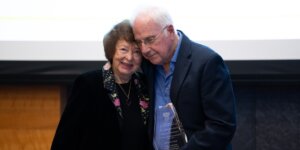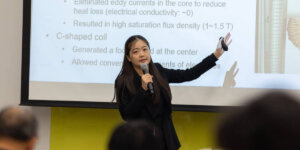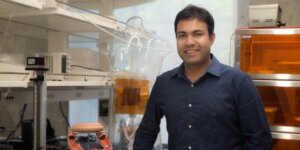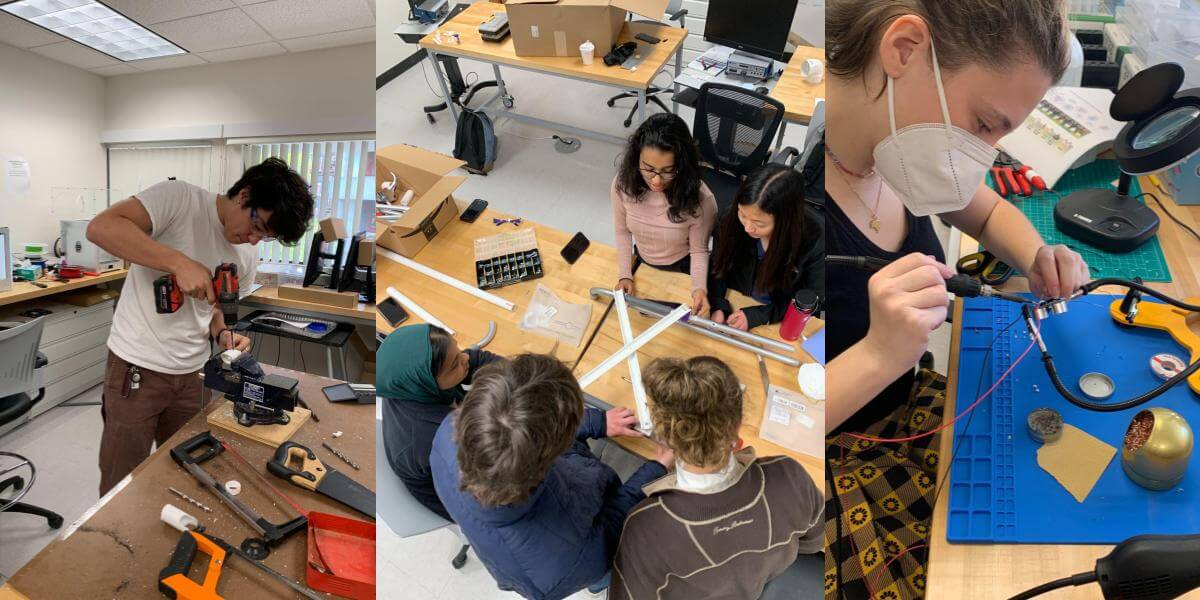
Students utilized the Denney Research Center’s BME Maker Space to work on their product prototyping
They had only 36 hours, across three days, to create a device that detects or prevents falls among the elderly.
By Sunday morning, the nine exhausted teams were barely upright themselves. Their Super Bowl? A final presentation that night that saw the winning team, The Brainy Bunch, take home the $750 prize.
This past weekend marked the 8th annual Associated Students of Biomedical Engineering’s Make-a-Thon. This year’s intensive competition over February 10-12 was the first in three years to be held entirely in person, with competing students having access to the Denney Research Center and the Baum Family Maker Space and collaborative workshops hosted by two other USC Viterbi student organizations who reside in the space. USC’s premier 3D printing club, 3D4E, and USC Makers hosted technical workshops throughout the event, providing students with the resources they needed to use the space’s resources and 3D printers.
Students attended a CAD workshop taught by Raymond Kim, a USC Viterbi senior lecturer in the Information Technology Program, and, of course, leaned heavily on their mentors — USC Viterbi alumni, graduate and senior year students who floated around the event, ready to answer the competitor’s questions about the design process.

First place for this year’s competition was awarded to The Brainy Bunch.
The competition kicked off with a keynote speech from Thenral Mangadu, an associate professor of public health and interdisciplinary health sciences at the University of Texas El Paso, who encouraged students to take advantage of the opportunity to showcase their engineering skills and push themselves in ways they didn’t know they could.
Then, the 2023 Make-a-thon challenge was revealed to the nine teams: develop a device that aids in the prevention or detection of falls in geriatric patients. The process of choosing this year’s challenge began in August when the event’s student planners reached out to healthcare and biomedical engineering professionals to identify gaps in existing medical device technology. The committee tries to select a needs area that addresses solutions for not only a diverse population of patients but also one that would not require a solution involving molecular or chemical engineering that would be unfeasible in the less than 48-hour time frame.
This year, geriatric patients were chosen because adults over 65 are the largest growing population in the United States, and it’s an issue close to the hearts of many students who have witnessed the problem in their own lives. According to the CDC, about 36 million falls are reported among older adults each year—resulting in more than 32,000 deaths and 95% of hip fractures.
One goal Make-a-thon planners implemented in this year’s competition was to incorporate more of the clinical side of engineering into the competition process. Many of the Make-a-thon’s planning committee are students interested in pursuing medicine and engineering, which inspired the team to get as much input as possible from clinical professionals who work with geriatric patients when planning the event. The clinical direction taken resulted in several physicians getting directly involved, which helped motivate and push students to embrace the challenge fully.
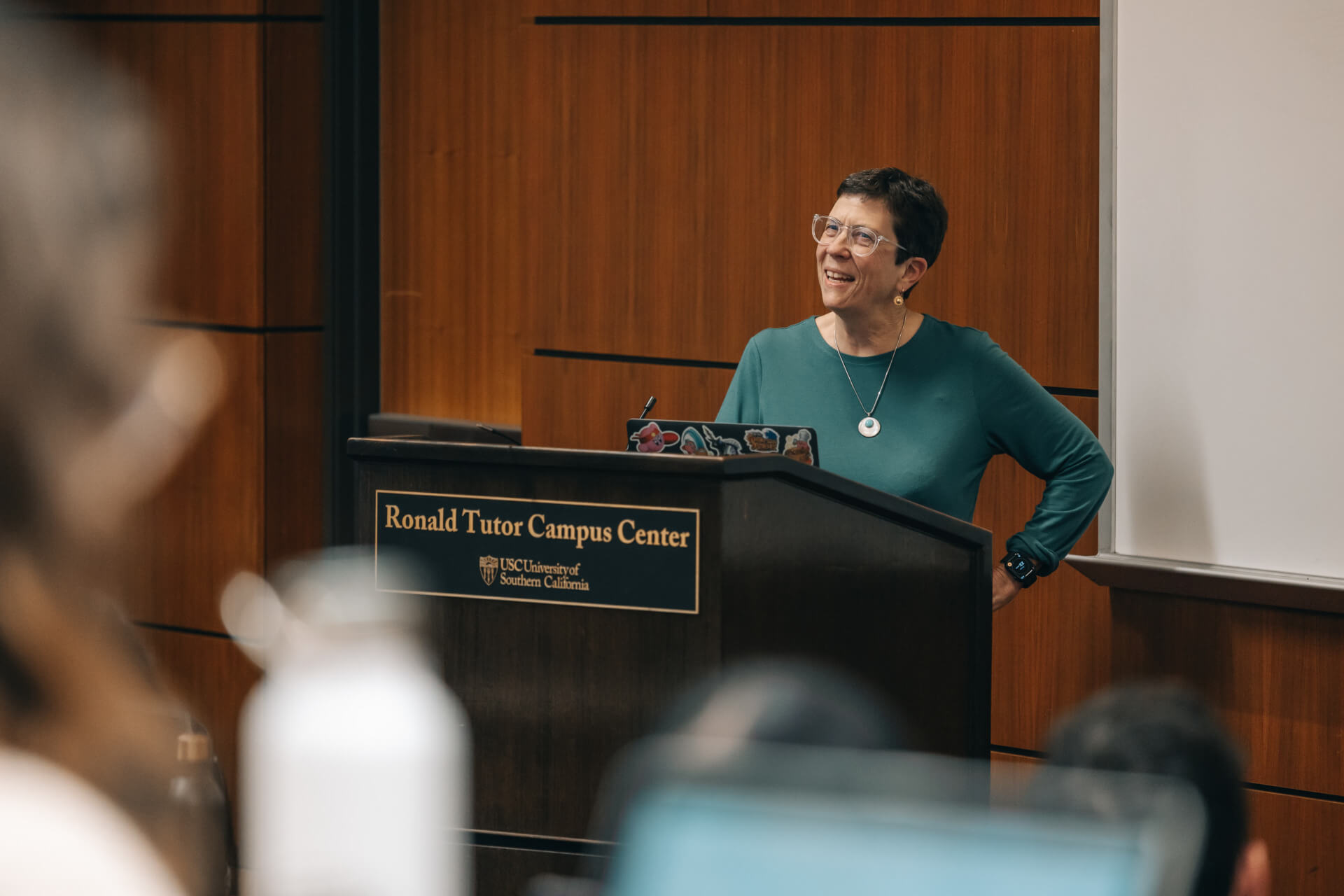
This year’s challenge was revealed by Dr. Laura Mosqueda, former dean of the Keck School of Medicine of USC, and a widely respected authority on elder abuse and care of the elderly and underserved.
The Make-a-thon challenge was revealed by Laura Mosqueda, a professor of family medicine and geriatrics, and former dean at the Keck School of Medicine of USC, a widely respected authority on elder abuse and care of the elderly and underserved. The event also featured Carolyn Kaloostian, a USC physician of geriatric and family medicine, who served as one of the competition’s judges, providing knowledgeable insight and feedback to the teams throughout the judgment process.
On Sunday, after hours of brainstorming, designing, prototyping, and revising, the teams of students presented their final products to the panel of experts for judging. First place was awarded to The Brainy Bunch; with runner-up, Team Medgineers, in 2nd place. Third place went to team Karl’s Inchtranet auf Tings or Um Essie, and an honorable mention was awarded to team Frontier Technologies.
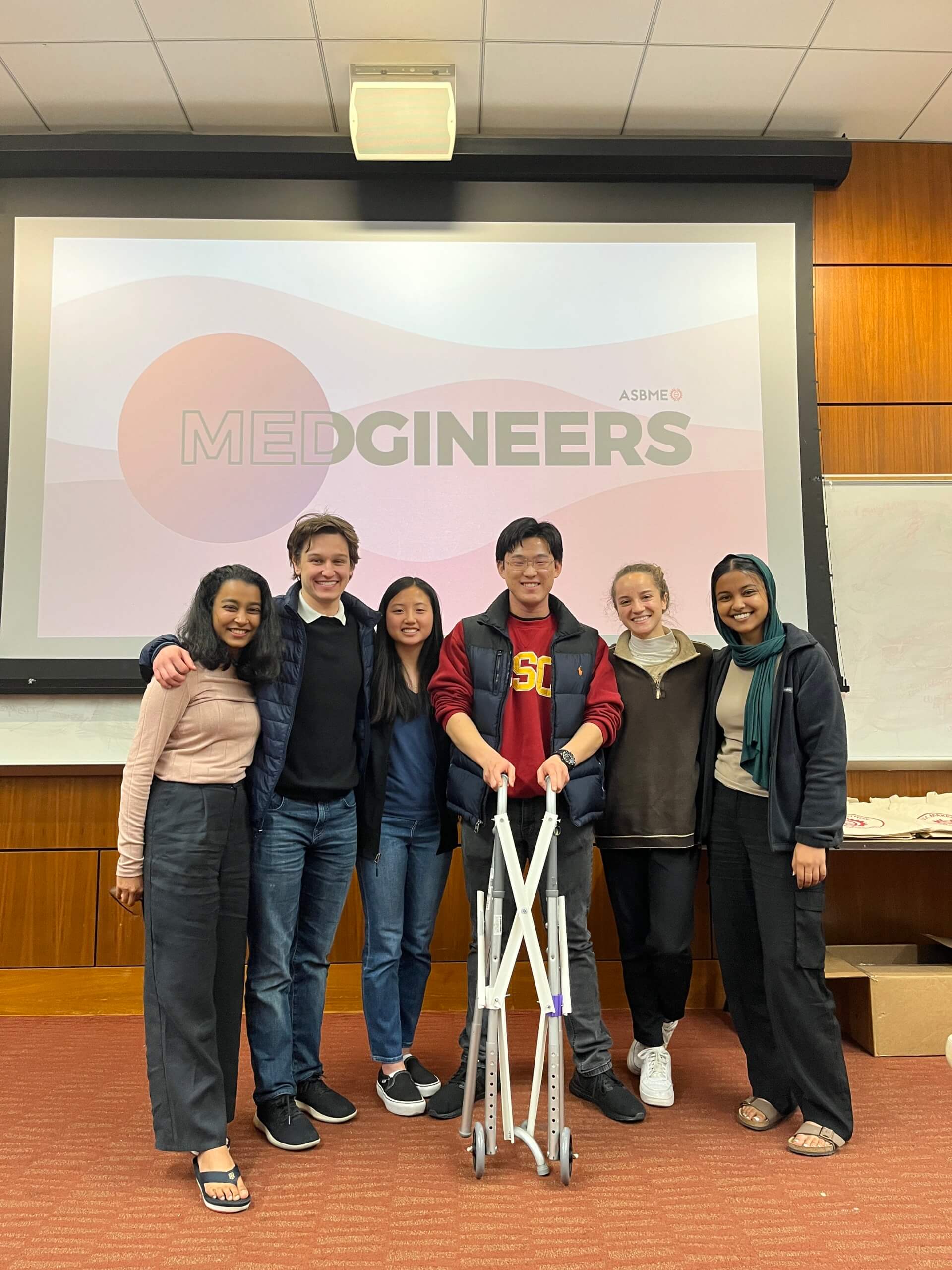
The second place prize was awarded to Team Medgineers
Asna Tabassum a member of the runner up team, The Medgineers, shared that her team’s inspiration was sparked by Dr. Mosqueda’s speech where she mentioned how the elderly can develop a fear of stairs which reduces an individual’s sense of independence. The solution the team landed on was a walker that folds up into a cane at the foot of stairs, enabling individuals to more easily navigate up the steps, expanding the cane back into a walker when they reach the top. Team Medgineers was assembled randomly from students who individually signed up to participate in this year’s event, Asna shared that at the end of the 36 hours they had not only developed a winning design but new friendships as well.
Because the Make-a-thon competition results in a tangible product, many participants choose to continue pursuing the projects they started, and the intellectual property is theirs to share. However, After speaking with Sabrina Sy, the 2023 president of the Make-a-thon committee, it’s clear the event was a huge success, and the judges were impressed with every team that participated.

Team Karl’s Inchtranet auf Tings or Um Essie took home the third place prize
As a senior and past participant, Sy shared a moment that encapsulates her love for the event: “This weekend, I remember a freshman coming up to me and saying, ‘I just learned how to CAD for the first time!’ There was so much pride in her eyes, and it really made me think back to the first time that I felt like I had accomplished a new skill as an engineer. This is really what Make-a-thon is all about, and this is who we plan this event for. These full-circle moments are what make student-run and student-led events so extraordinarily meaningful.”
Published on February 17th, 2023
Last updated on November 29th, 2024




